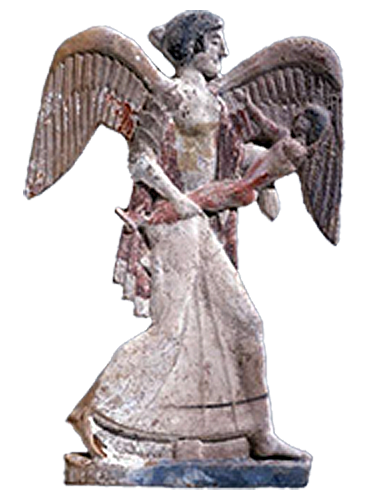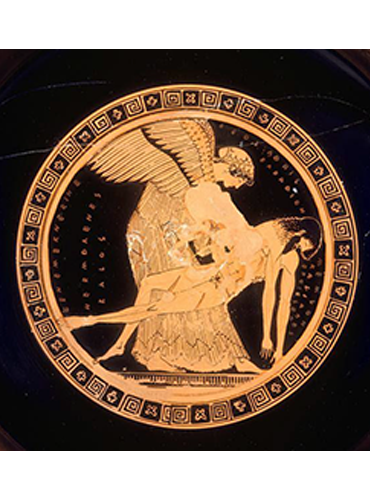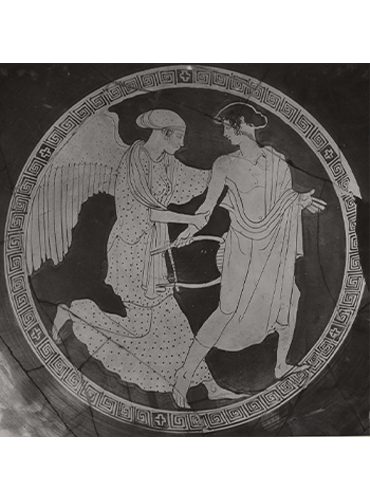Eos
Some of the most important Greek deities are those of celestial bodies. Olympians such as Artemis and Apollo are seen often throughout ancient Greek iconography, but while these icons of Greek mythology are widely known to western audiences, some of the lesser emphasized deities also carry great weight. Eos, goddess of the dawn, sister to Helios the sun god, was often depicted as a winged woman in ancient Greek vases and imagery. Sometimes shown riding a chariot ahead of her brother Helios, she is also pictured in vase paintings as she flies through the sky carrying two hydrias, sprinkling the morning dew across the earth. Eos is described thus: “Beautiful she was, with rosy fingers and gleaming white wings, and clad in a saffron mantle.” The importance of Eos as the bringer of dawn is not to be overlooked. Her brother Helios is one of the most important celestial figures, literally being identified with the sun as it moves through the heavens. Although he is commonly identified with Apollo, Helios is important as the bringer of light, and associated with truth as nothing can be hidden from the sun. Eos therefore, as his sister and immediate predecessor of him in the chronological passage of time throughout the day, is an instrumental counterpart to her fiery brother. In one myth, Eos falls in love with Tithonus, son of Tros. She requests from Zeus for Tithonus to be granted immortality, however she forgot to also request eternal youth. As such, Tithonus grew older by the day until, “when Eos tired of nursing him, he turned into a cicada.” This striking event is only one of the situations in which Eos directly affected the life of a mortal. In another myth, she falls in love with Orion, whom she both spends intimate time with on the island of Delos, in addition to having her brother Helios return Orion’s sight. Additionally, when trying to escape a giant scorpion set upon him by Apollo, Orion attempted to swim to the island of Delos, where he hoped Eos would provide protection.

(490BC – 470BC)
British Museum

(1st quarter 5th century BC)
The Louvre

(470BC – 460BC)
British Museum